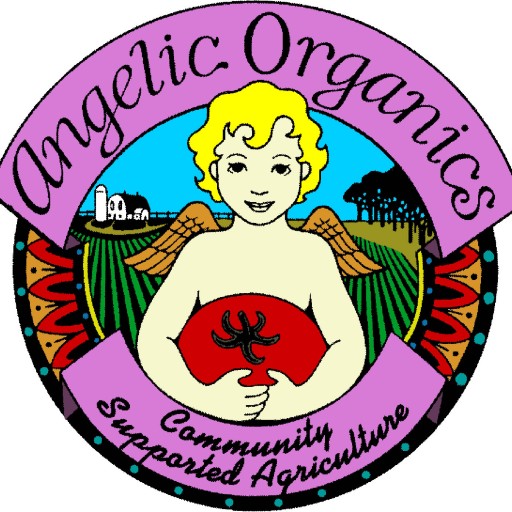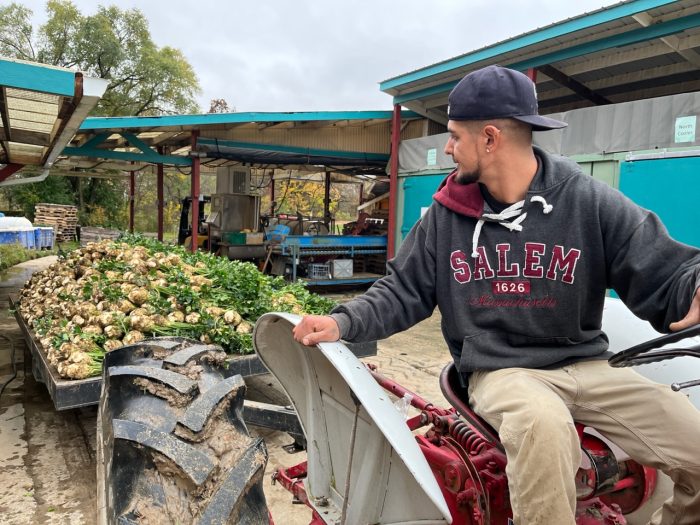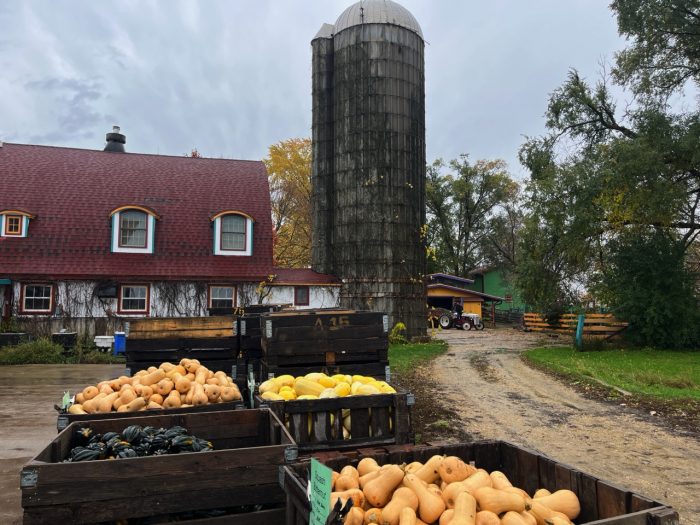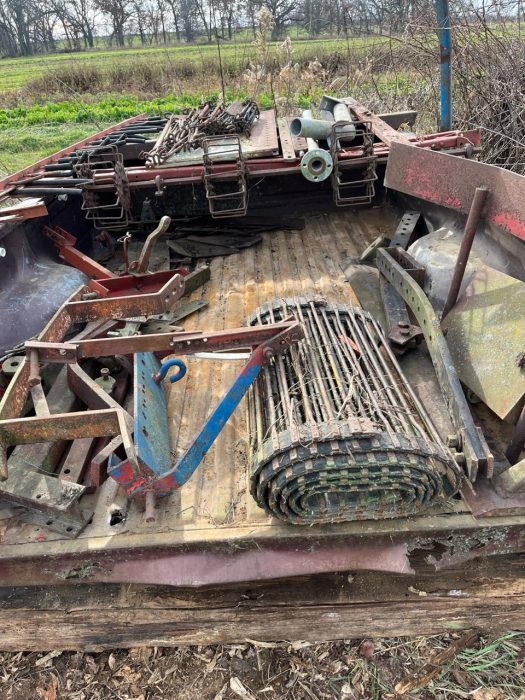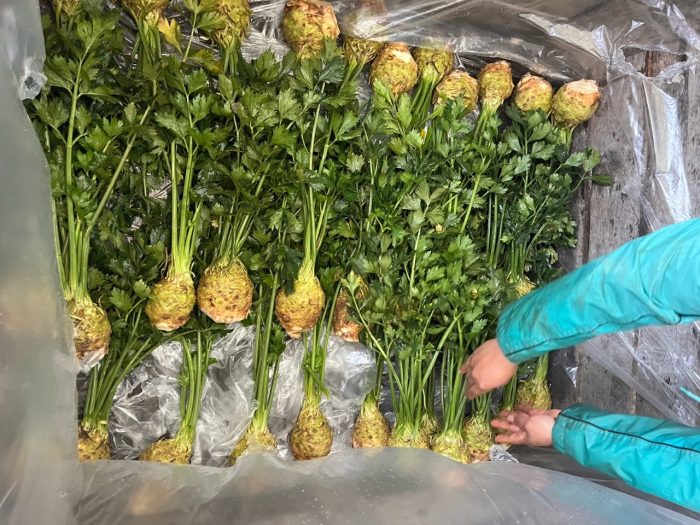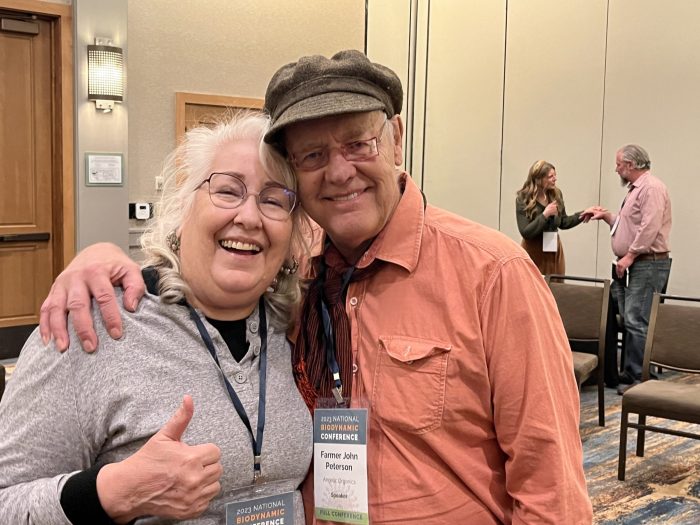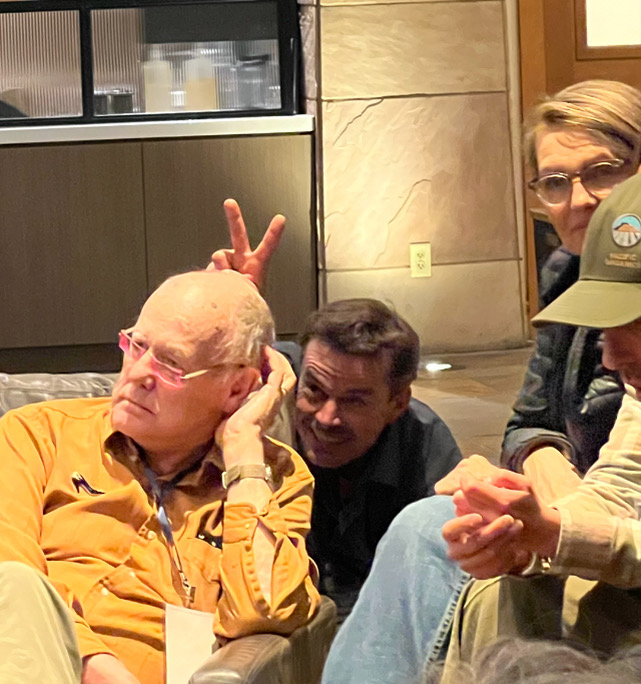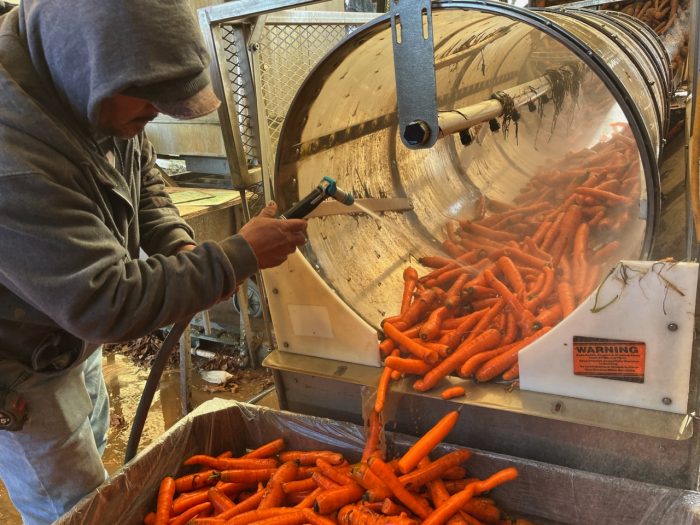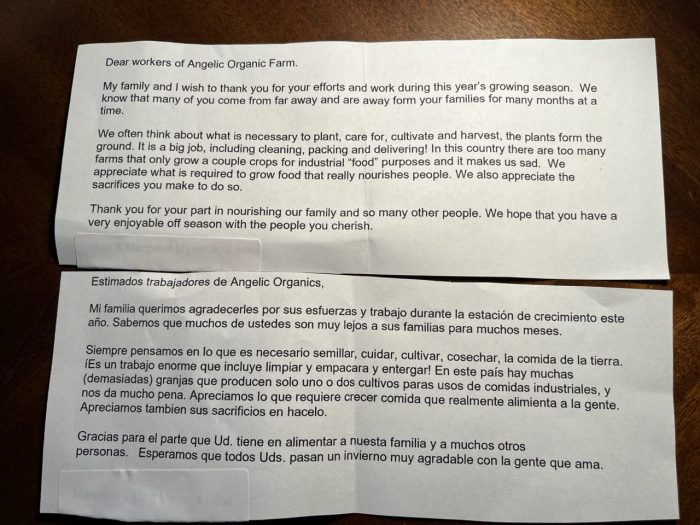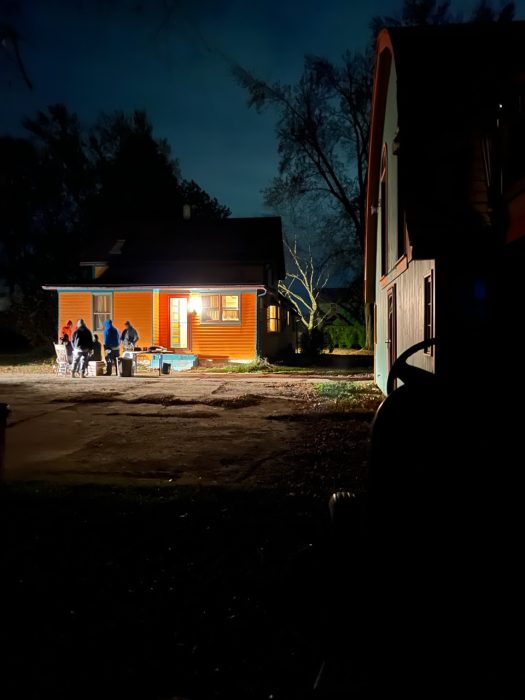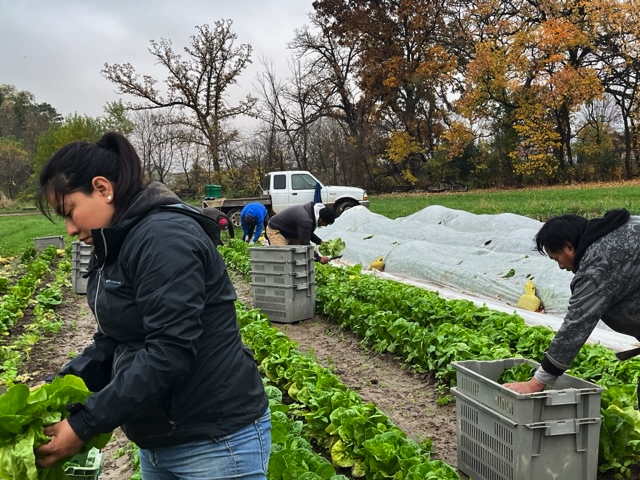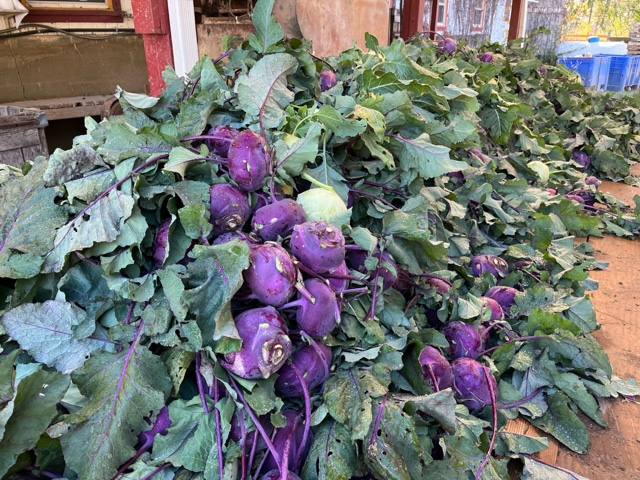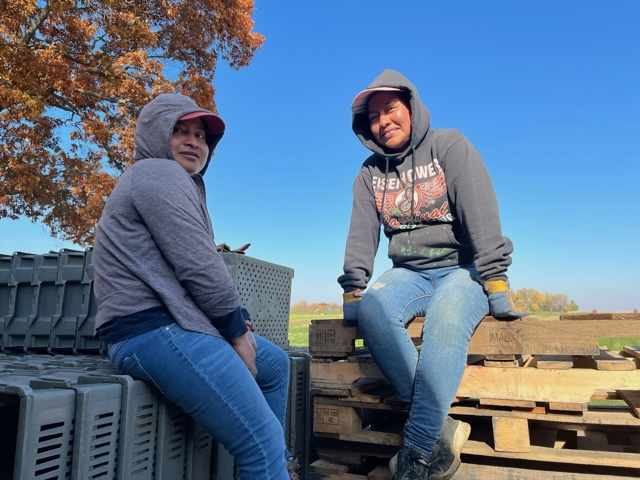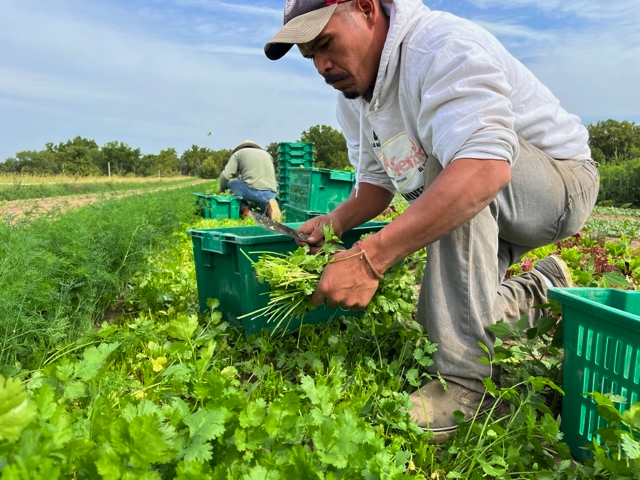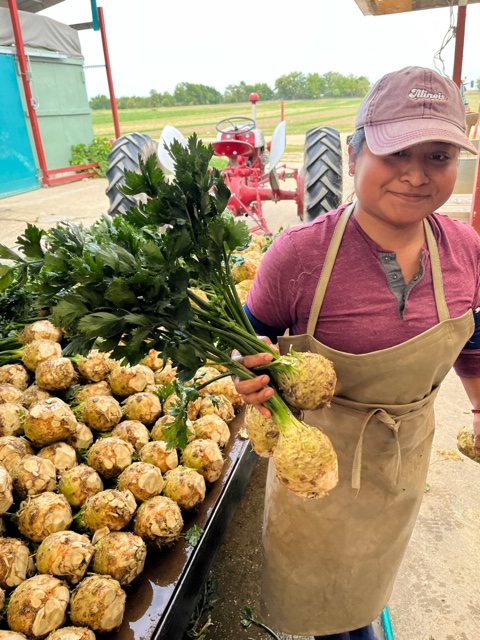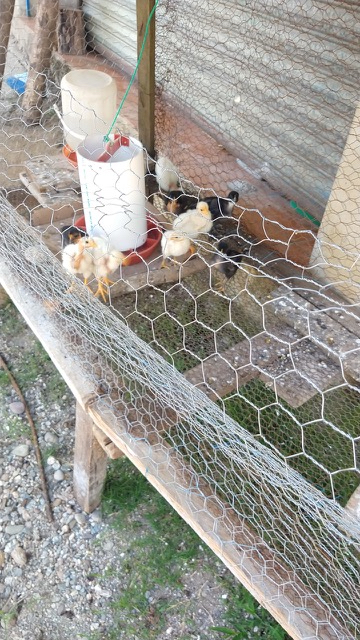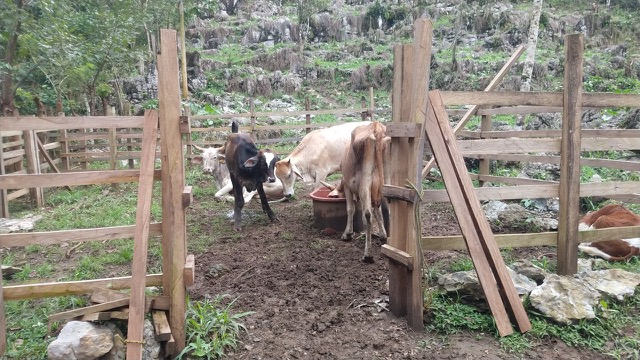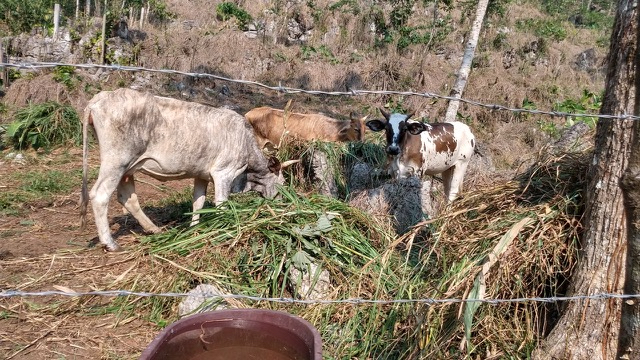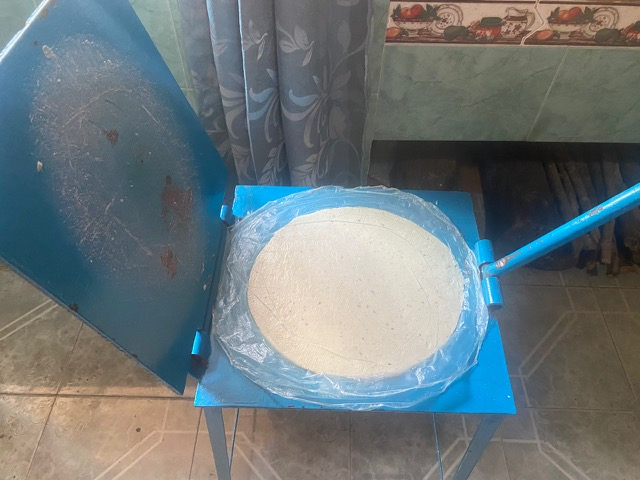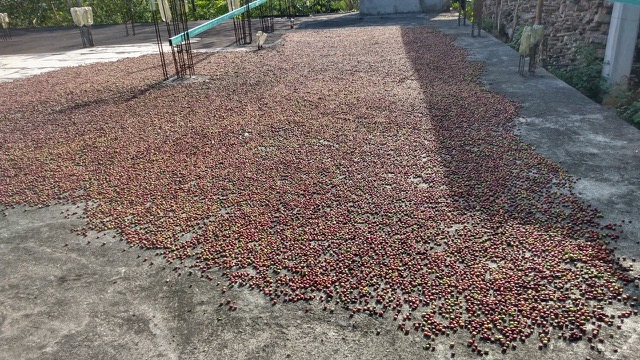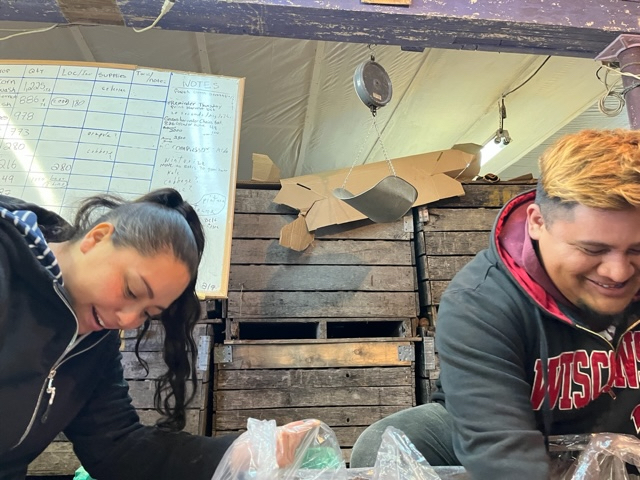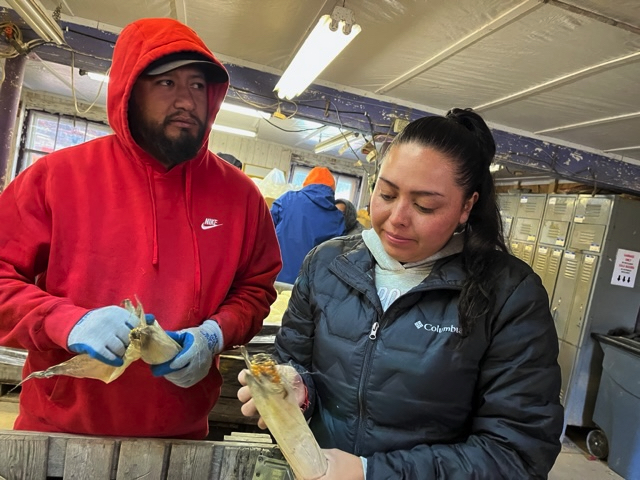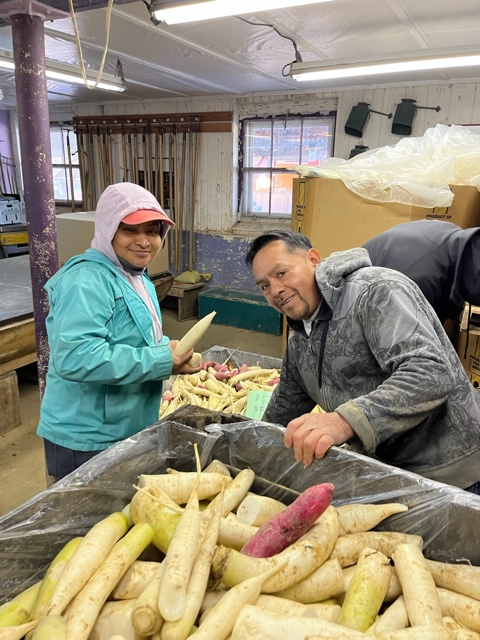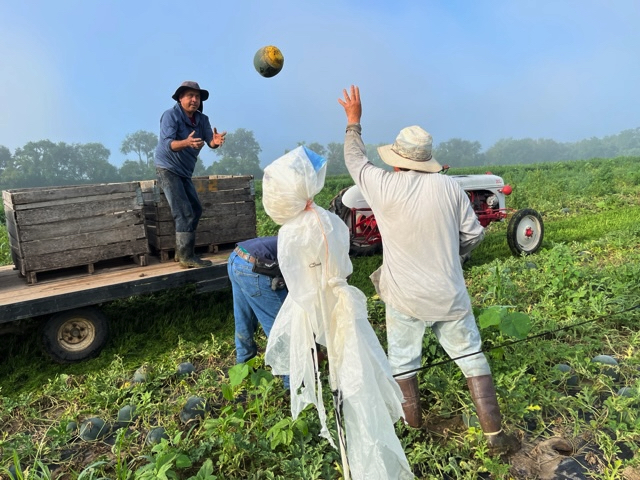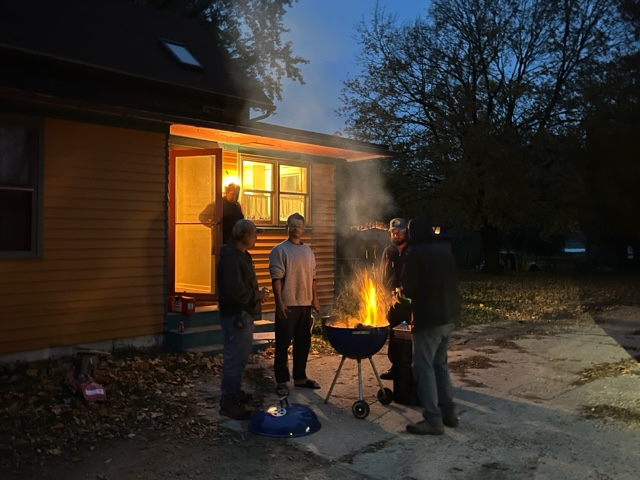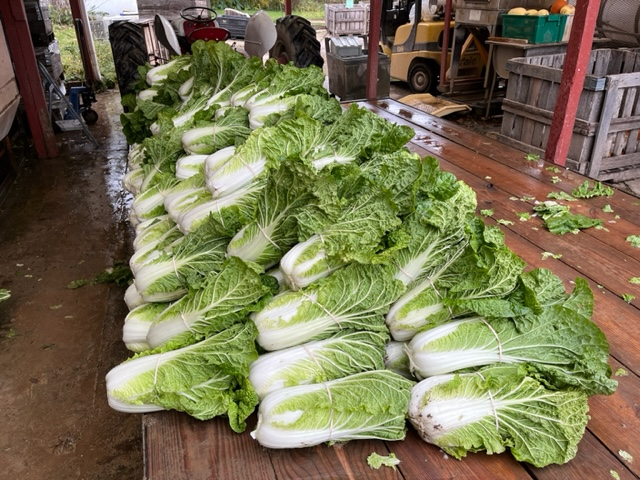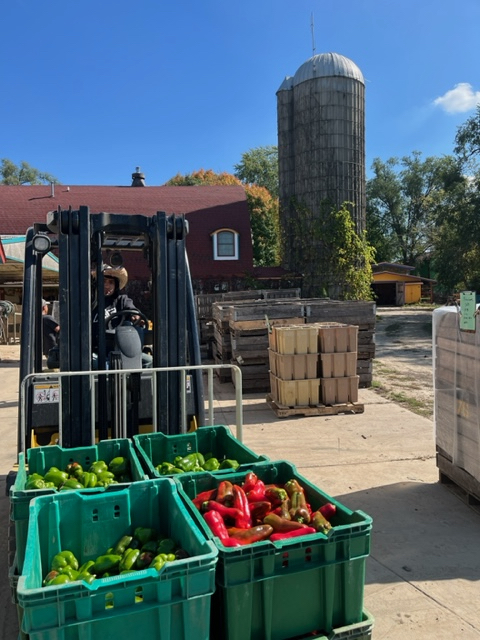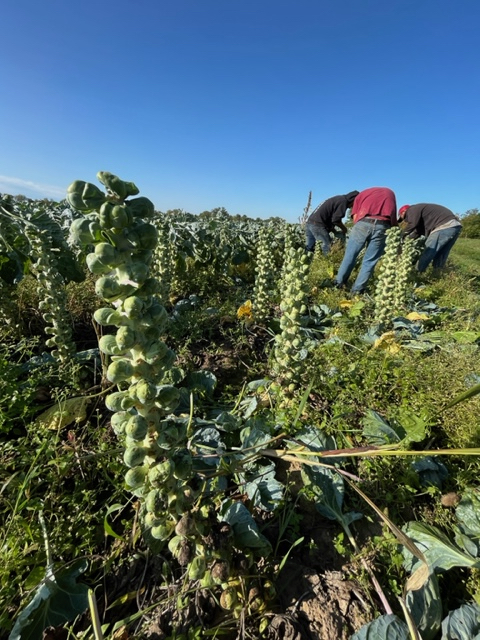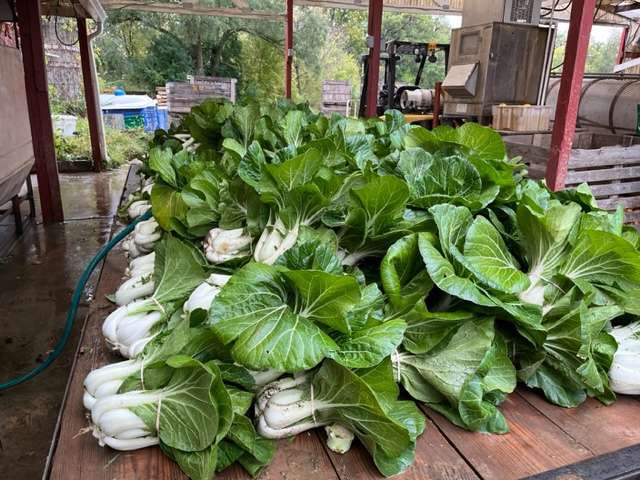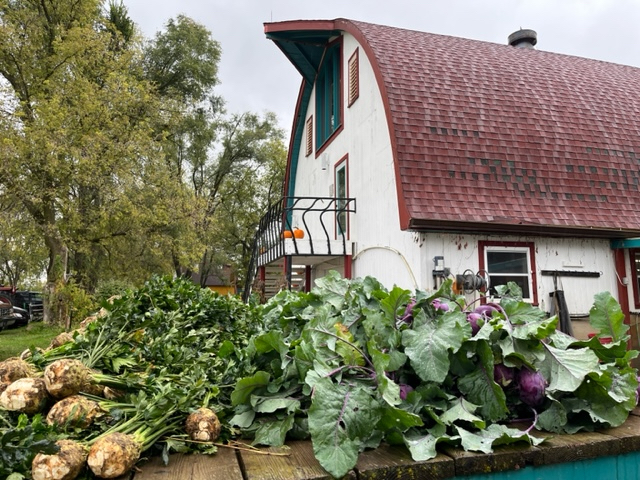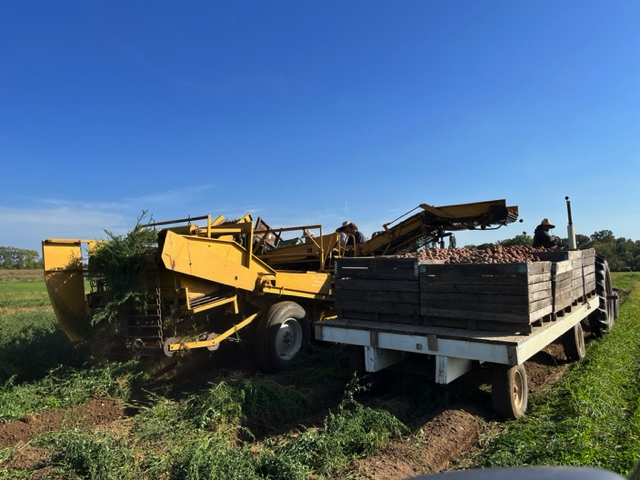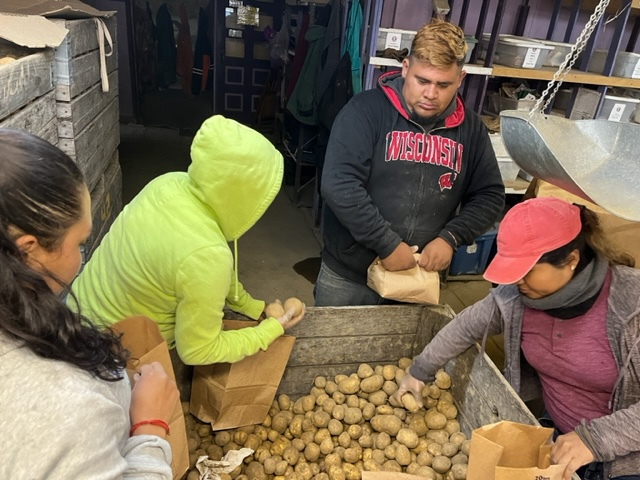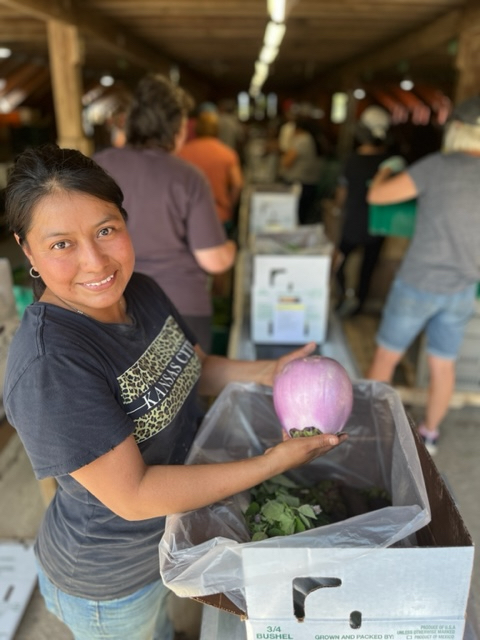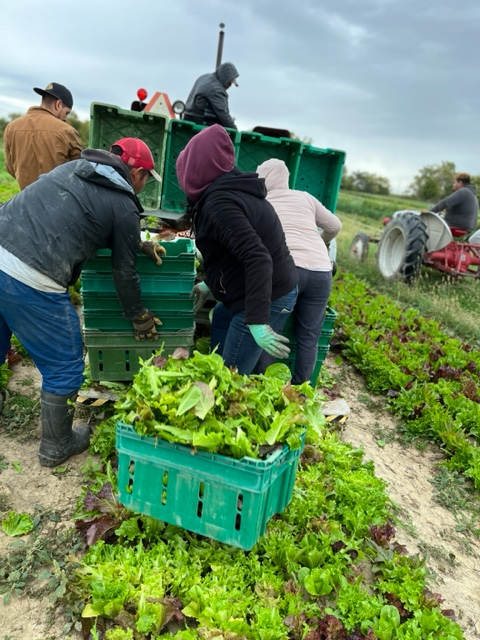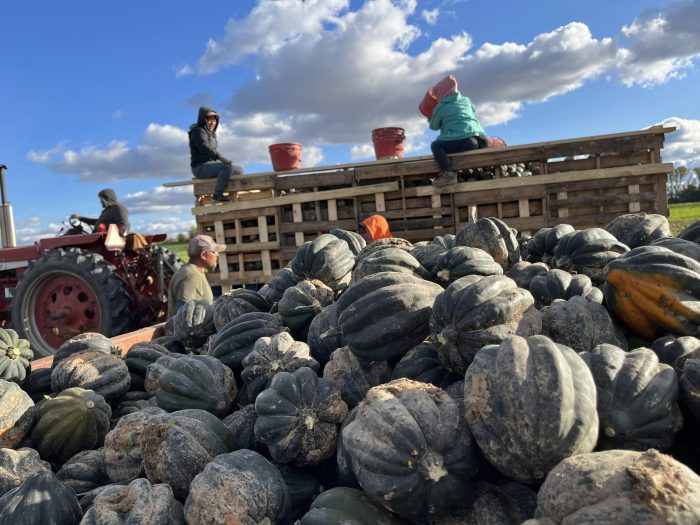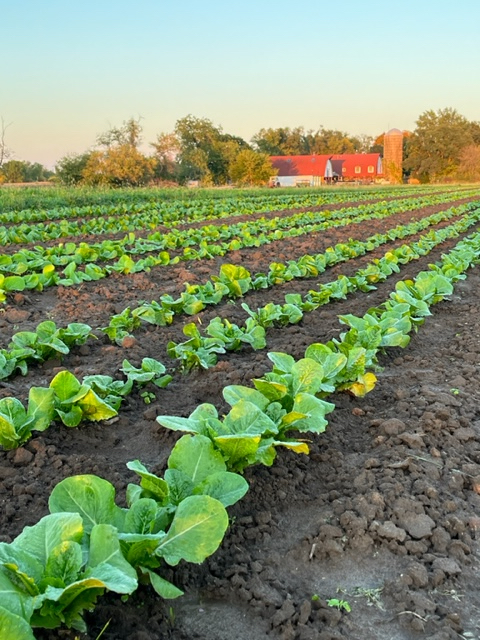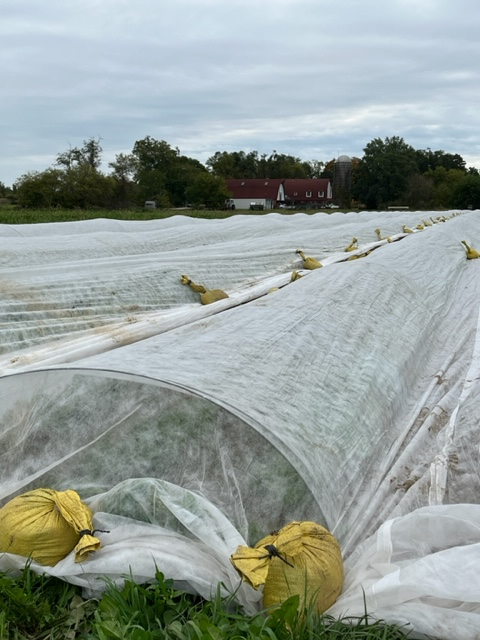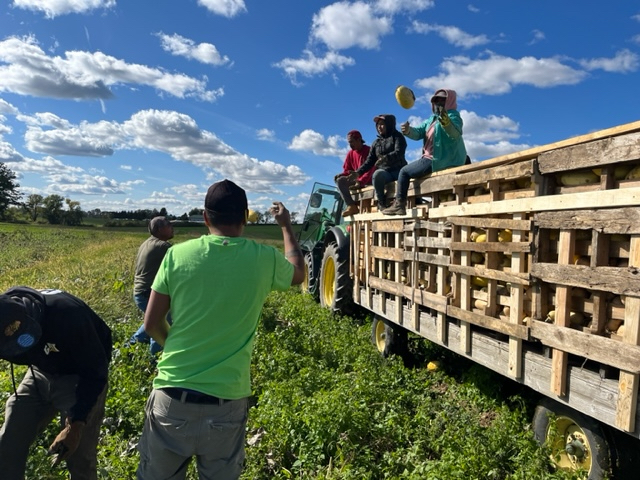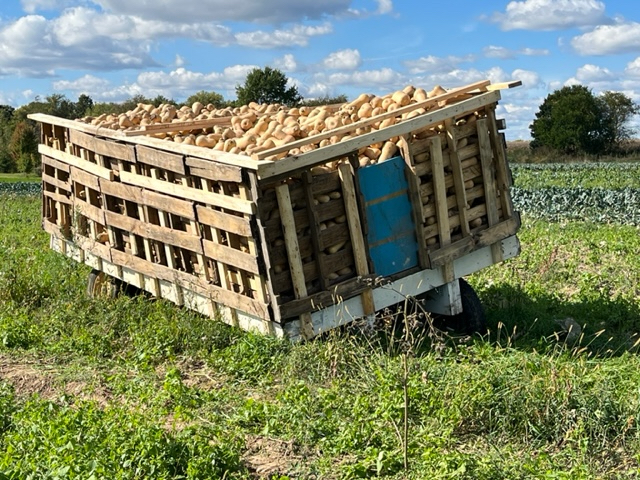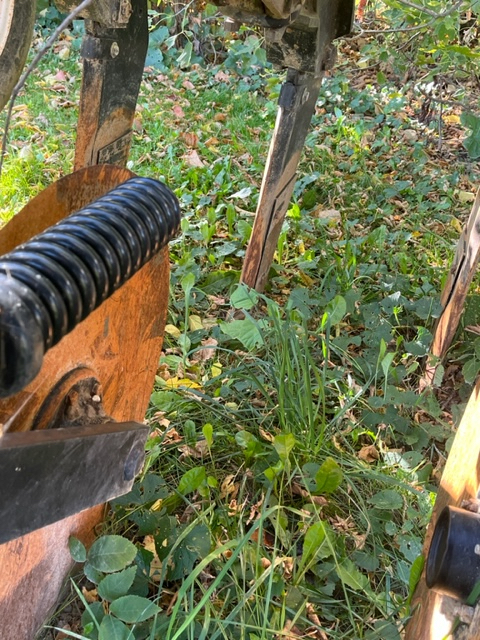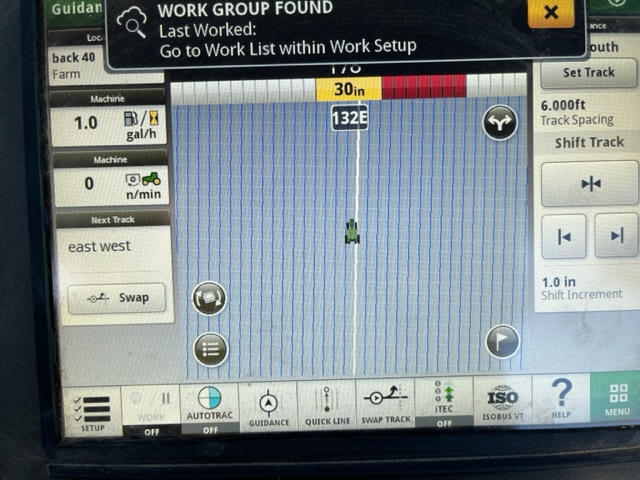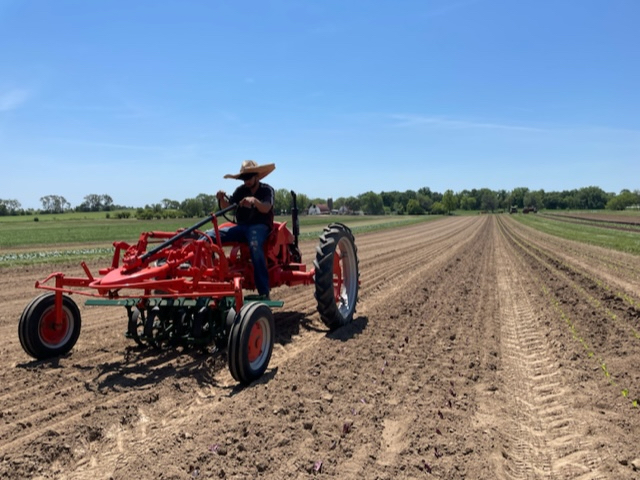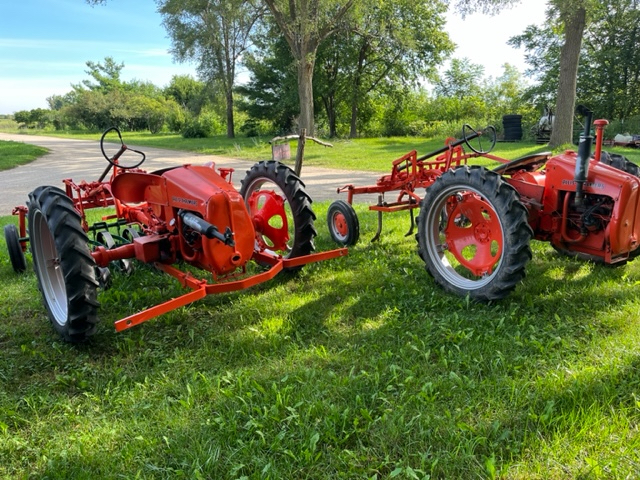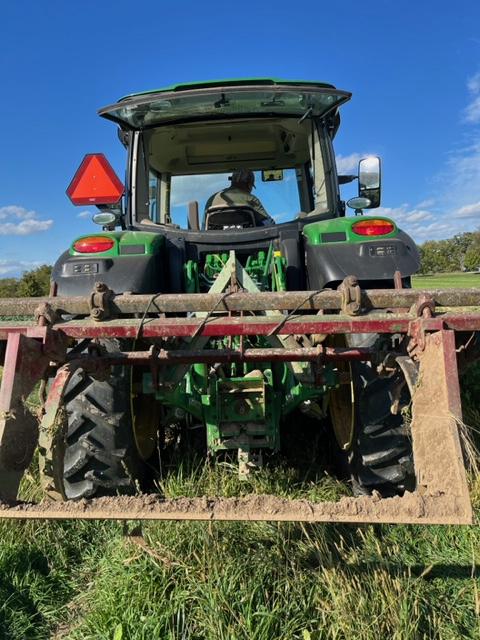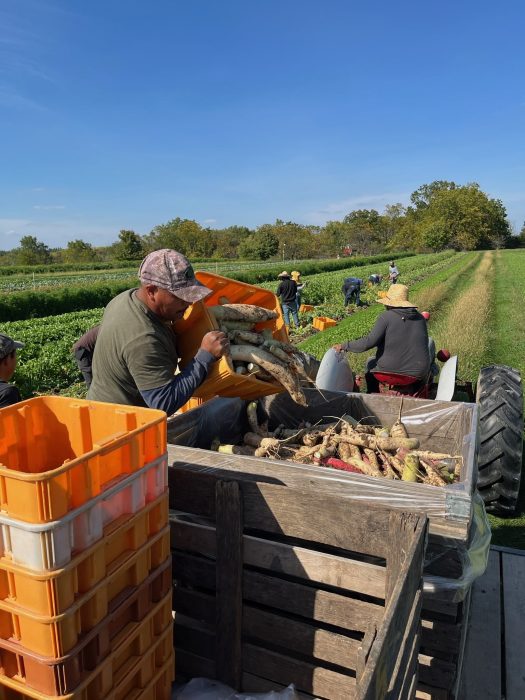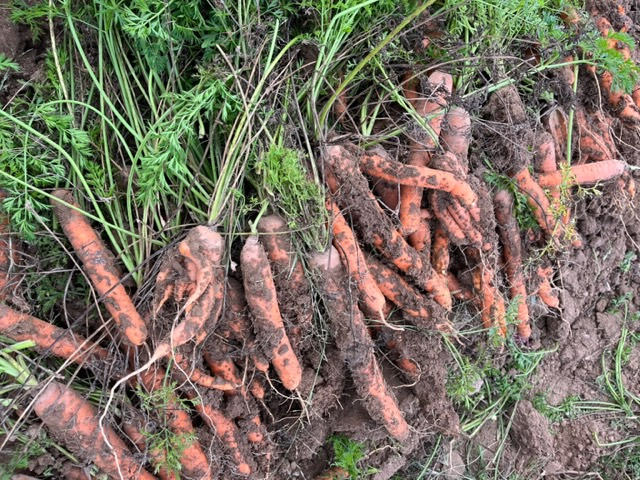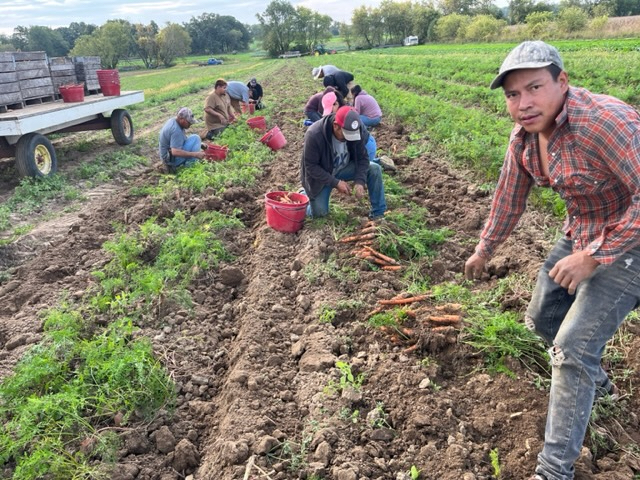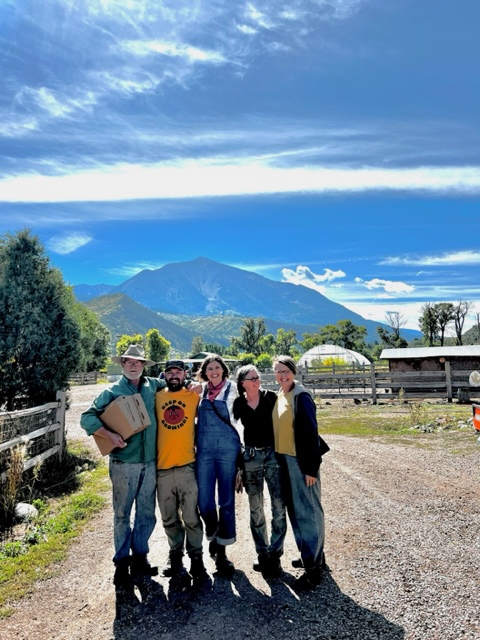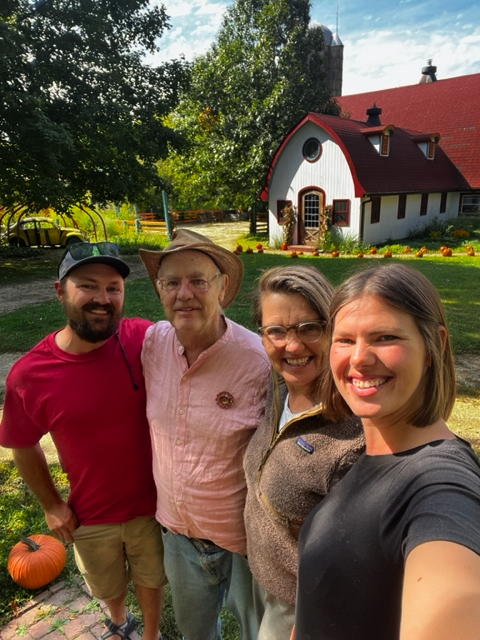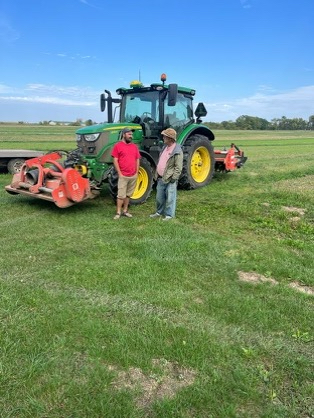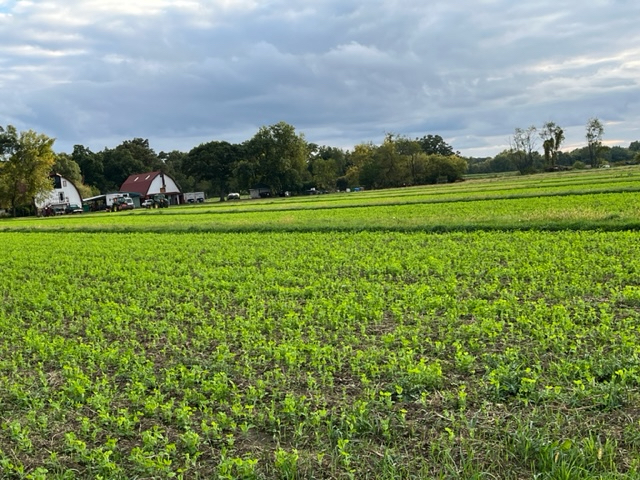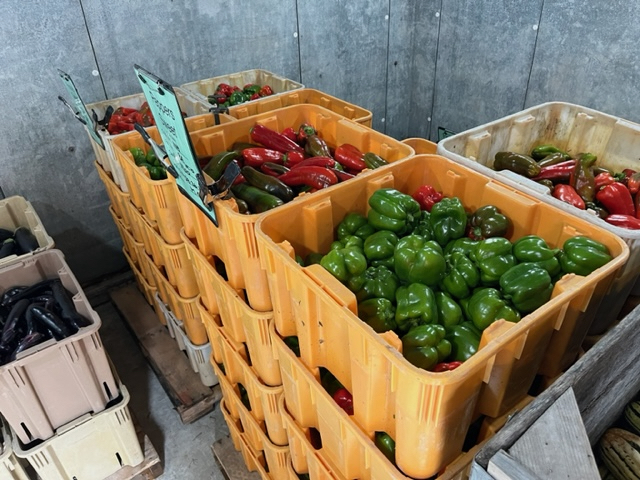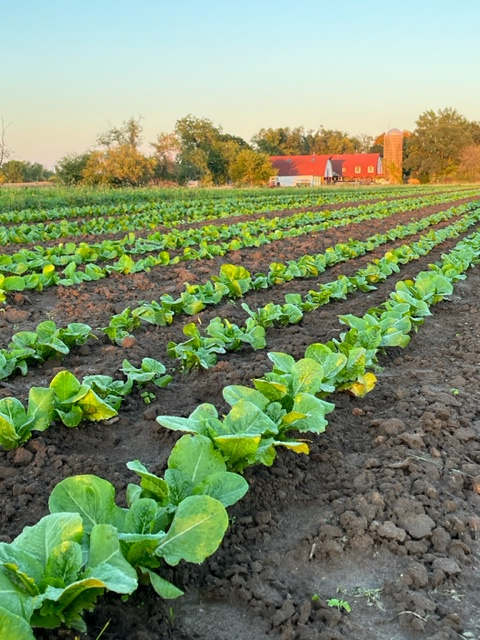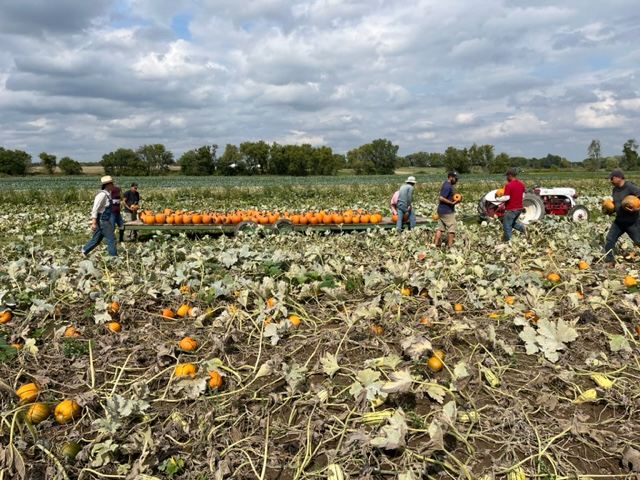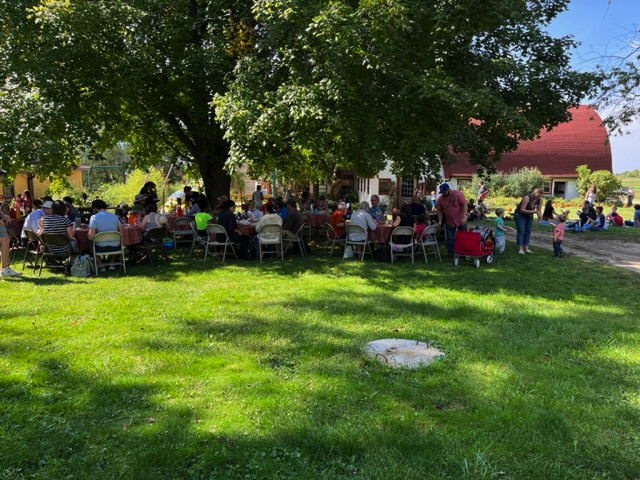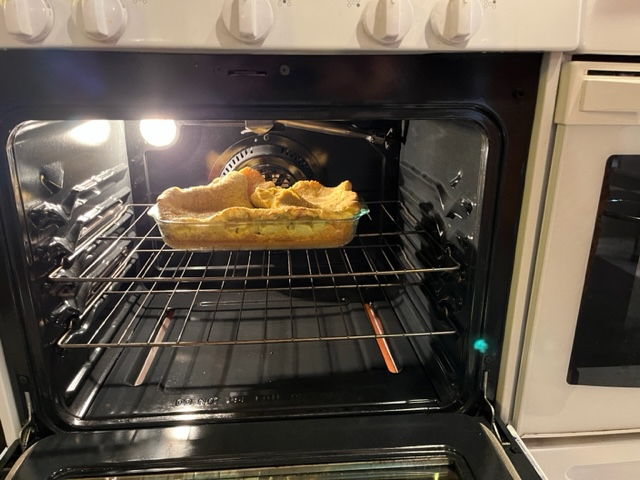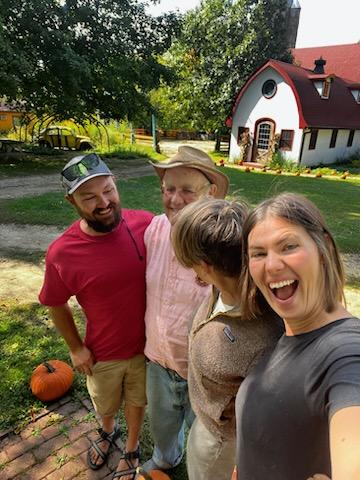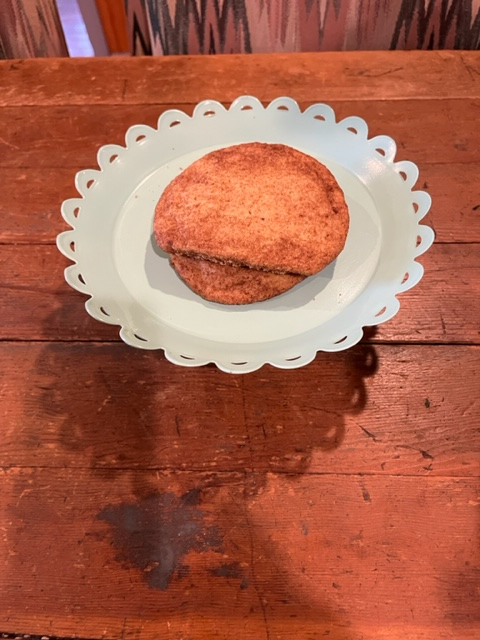Farmer John Writes: Done, or Just Getting Started?
Holiday Season Week 4, Deliveries of November 28th – December 2nd, 2023
This is the last week of deliveries for the 2023 season. We’re not exactly done. The last pack is done and the final deliveries are being made this week, so now we are starting to get ready for 2024. There’s not much time between now and when we start in the greenhouse in early March. If we aren’t fully prepared for the next season, our yields will suffer. Nothing is more important on a farm than timeliness. To be timely, all the machines have to be inspected and made ready to go. All the buildings have to be inspected and readied for another season. Once the season starts, there is no time for machinery maintenance and building upkeep. Victor, Pollo and I will spend the winter preparing for what’s next.
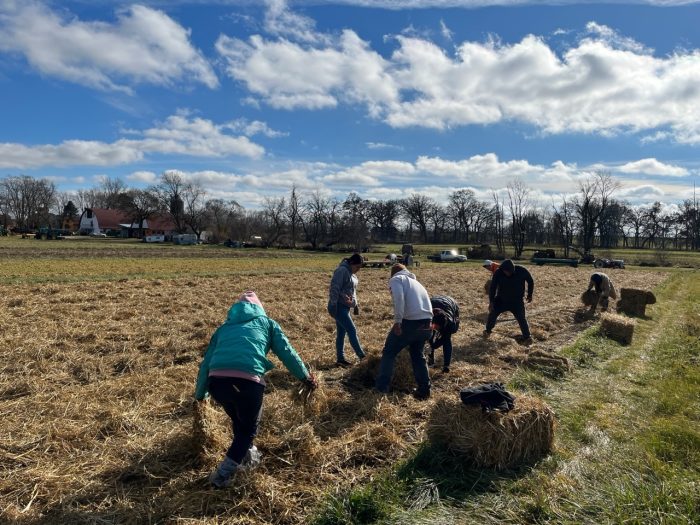
the crew mulches next year’s crop of garlic with straw—in record time
To elaborate on the caption for this photo above: the crew of 8 probably did the mulching in less than half the time that it would have taken 14 workers to do it in prior years—maybe in 1/3 the time that 14 workers would have taken.
It is easy for people in our cushy culture to decide that it is exploitative of workers for management to have a high standard for their production; it is not. Our workers do not want to be held back; they want to shine, to go on to the next thing and blaze through that, and then the next thing. The way to frustrate and disempower our field crew is to coddle them, hold them back, get in their way. My standards for our workers’ productivity is so much lower than what they actually bring to the job. Pretty much every day, I go, “Huh, you are done already? Done? How am I supposed to keep up with you with field instructions?” They smile and laugh.
Joining Us Now is Like Mulching the Garlic the Year Before Harvest
If you haven’t already, sign up for 2024 now when we are still fresh in your mind. We’d much rather have you as our shareholder than someone tentative and new. Sign up for your 2024 share here. (Be sure to log in to your existing account if you are a current shareholder.)
Final Harvest of the Season
The spinach sweetened with the frosts.

a rare spinach harvest in late November
The Last Pack Day was Cold
For the last pack day, our many volunteers and crew members endured very cold temperatures. Bravo to all!
For your Review
Items we made available for customization for the last pack were:
butternut squash (supplemented with kabocha squash)
acorn squash
potatoes
kohlrabi
carrots
cabbage
spinach
Brussels sprouts
kale
popcorn
garlic
onions (not available for customization—we just added one to every box)
We think these options made for a pretty good final Holiday Box.
Substitutions
Squash—we ran low on butternut squash. If you ordered more than one butternut, instead of another butternut, you will receive a kabocha squash.
Onions—we carefully graded our remaining onions and culled any with soft tops, discarding maybe 5 to 10% of the total amount. We put at least one onion into every box for the last pack, just because. Sometimes the onion served as Farmer’s Choice; sometimes it was just a free onion. Everyone received at least one onion.
The Final Pack of the Season
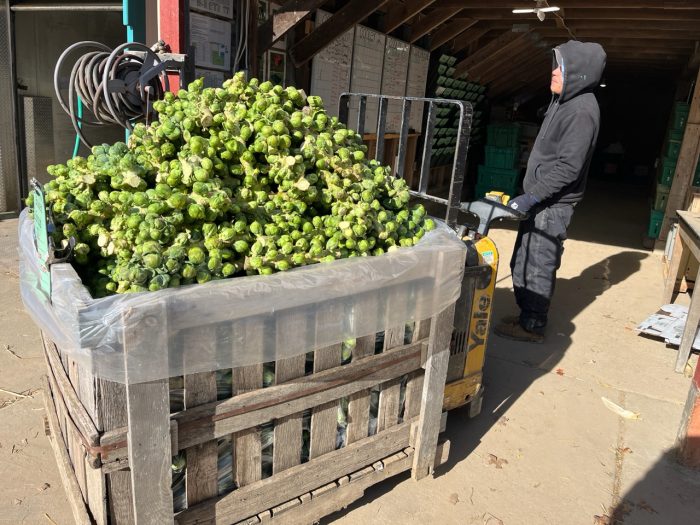
tower of Brussels sprouts, sweetened by numerous frosts

kale tops are especially sweet
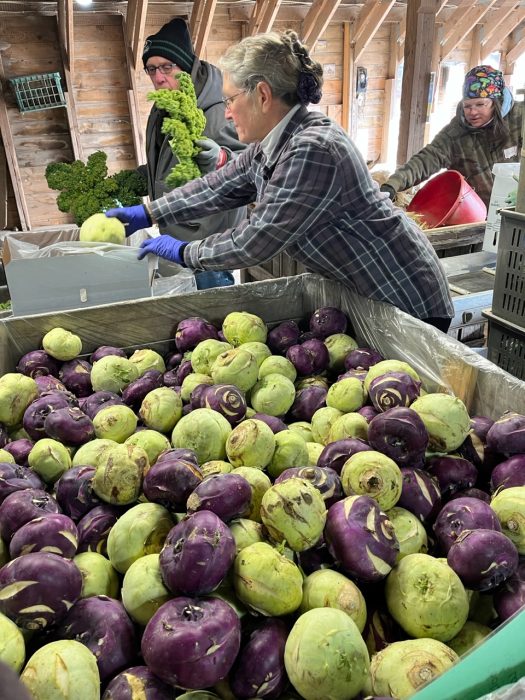
kohlrabi displays its colors to packer Gabrielle
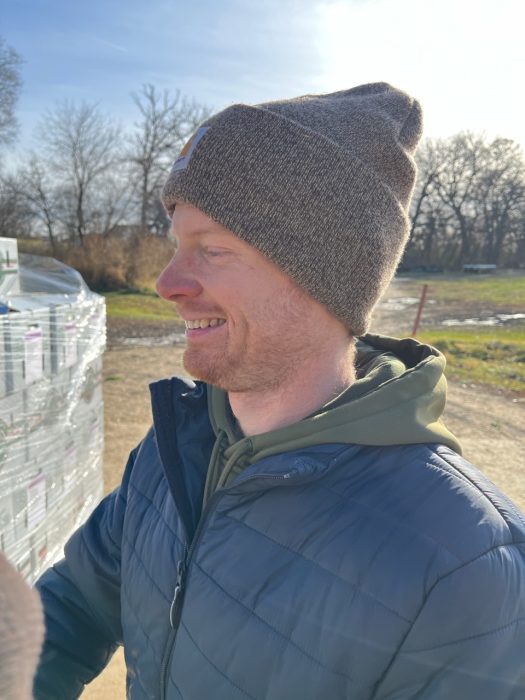
Nathan exalts in the last pack

end of the line
The H-2A Crew Departs

Concepcion is ready to take flight
The H-2A crew trickled away towards the end of last week. By Saturday, they were all on their way south, some by bus, some by plane.

Mayra, Ruben, and Antonio arrive in their home town in Mexico
What a fun, festive bunch of hard workers. It’s interesting when affection surpasses the boundaries of work, when the boss/employee hierarchy dissolves, and we are left with mutual love, respect, admiration and joy. I know—don’t date your therapist; don’t marry your doctor; don’t fall for your teacher or your preacher.
My love for the workers is first and foremost. I tell them, “you are first my friends; after that my employees.”
My mother taught school for 35 years. She said in her last years of teaching, “I was told I can’t hug my kids. They can put me in jail if they want. Until then, I will hug my kids.”
Customer Service
The phrase “like sweeping the ocean back with a broom” comes to mind when I dive back into customer service, on top of my other jobs here as operations manager, head farmer, HR administrator, bookkeeper, fertility manager, etc. I know enough now about customer service to know that we need a full-time, highly qualified person doing it. As I wrote above about timeliness being of crucial importance in farming, this is also true of customer service.
The Weather
The weather is doing what it does—cooling, warming, gusting, drizzling, raining, flurrying. I never resent the weather—a lesson I could well apply to other areas of my life.
Biodynamics
I don’t want to come across as a proselytizer for Rudolf Steiner, Anthroposophy or Biodynamics. If you have watched The Real Dirt on Farmer John, it is clear that the director Taggart Siegel and I did not tell viewers how to think nor what to feel nor how to live. It was important to share a story, and let the audience members make up their minds as to what to do with the story. This is also my approach to Farm News—to respect you, the reader, with your choice of how to experience my newsletters.
In my following references to Steiner, Anthroposophy and Biodynamics, again, I am not telling you what to think or do. I am just presenting what is of great interest to me, and which you might want to investigate. I am actually reluctant to present as much below as I do, because it might be perceived as a bit dogmatic or prejudicial (or delusional). My purpose is to give you a picture of what your farm and your farmer are up to as an essential component in truly healing, truly regenerative agricultural (and social) practices. There are many links interspersed below that will enable you to explore more if you are interested.
Lloyd Nelson in Colorado makes Biodynamic preparations. Here’s a link to his work Biodynamic Source. I won’t delve into prep making for you, as it’s complex and seemingly exotic. The underpinnings of it are addressed in Rudolf Steiner’s eight lectures on Agriculture, given in Koberwitz (now in Poland) in 1924.
Every year, about 70 people from the Fellowship of Biodynamic Preparation Makers converge from across the States to discuss and demonstrate prepmaking. There is a possibility that our farm will host an upcoming conference of prep makers.
A distinguishing feature of our farm is that it can host large groups in comfort in any season. The main barn loft can seat 60-70 around the stage. The granary can easily seat 25 people in the splendor of lazure painting and bountiful natural lighting. The greenhouse can seat probably 150 people. All three spaces are heated.
We can’t put up all the prep-makers; we only have sleeping accommodations for 16, maybe 20 if we stretch it. Our farm can sleep that many people? Yup. If I wasn’t so busy farming, I would facilitate more social life on this farm. Farms aren’t only for production; they also can serve as centers of social and cultural life.
When Lloyd’s Biodynamic 500 soil preparation (buffalo horn manure) arrived here a few weeks ago, it was accompanied by his drawing of the American buffalo. The prep is made from buffalo manure, so it has a special quality of indigenousness to it.

Lloyd’s depiction of the buffalo, and a small jar of Buffalo Horn Manure, enough for several acres
When I was little, there was still an ancient-seeming buffalo watering hole on the farm, or maybe it was more of a mud bath. It was about 60 feet long, 30 feet wide, and a foot and a half deep. Eventually, it got filled in from plowing and tilling. No trace of it has survived, other than in my memory and my imagination.
Biodynamics Worldwide?
There are many ideas for how to save the planet: veganism, vegetarianism, vertical farming, electric vehicles, hoovering carbon out of the sky, bicycling, walking, carpooling, breatharianism, recycling, protesting, fashioning fashion out of natural materials—this list is a teeny taste of what is out there for our planet’s salvation. Since this is a very materialistic age, it’s not surprising that much of the support or evidence for these planetary enhancements/salvations is couched in material terms, expressed in data, graphs, charts, etc. Maybe the problem needs to be approached more cosmically, more spiritually. Are we going to solve these problems with the same kind of thinking that caused the problems?
My new friend Sundeep said to me, “It is much easier to have Biodynamics accepted in the East. The people in the East go by feelings and intuition. They hear about Biodynamics and right away they want to do it. In the West, people need evidence, studies, charts; they are much more in their heads. It is much harder in the West.”
Does Weather Matter? Does Soil?
I will include one example of ecological reasoning here: vertical farms. The idea is (was) to raise vegetables in or near the city with artificial light and nutrients, keep the produce local, provide meaningful jobs to the urban folk (and robots). Millions upon millions of dollars poured into this alluring picture. Now a wave of bankruptcies for these projects has started. Soilless, robotic, crop production? Is there a soul in that? Does weather matter? Does soil? Read about the challenges and bankruptcies about this good idea to save the planet. Read more, here.
Sundeep Kamath and the Planet
I mentioned Sundeep in a recent issue of Farm News. When Sundeep visited the farm last week, he told me that he had found his calling in 2009 and has been content ever since. What is his calling? To be an emissary for Biodynamics, and to encourage and facilitate the application of Biodynamic preparations throughout the world.
Let’s go to the inspiration for this life path for Sundeep: Rudolf Steiner [said], “The benefit of the Biodynamic compost preparations should be made available as quickly as possible to the largest possible areas of the entire Earth, for the Earth’s healing.”
There were other people at the recent Biodynamic Conference in Colorado who are fully committed to the Biodynamic preparations. Sundeep takes this commitment from continent to continent—advising, facilitating, training. This is his life. The Biodynamic path resonates deeply for him (and me). Just because it is a bit esoteric does not mean it’s wrong, misleading, or misguided. Just because data driven evidence for vertical farms seems sound does not mean it’s right or employee friendly or earth friendly.

Farmer John and Sundeep (I loved Sundeep’s green shirt, so he gave it to me)
Sundeep visits the Goetheanum in Dornach, Switzerland, twice a year, and often presents on his work with farms to groups there. The Goetheanum is the worldwide headquarters for Rudolf Steiner’s body of work called Anthroposophy.
Sundeep said to me, “I think Angelic Organics is the largest CSA farm in the world. I will work to have you and Haidy invited to the Goetheanum to present on your CSA, which is so well-managed and so productive.”
He declared, “The future of small farms is Community Supported Agriculture. Small farms cannot compete in the wholesale markets, cannot supply the Walmarts and the Whole Foods. Their farming products and their culture need to be localized.”
“Look at the struggles of small farms today—throughout the world,” he lamented. “It is tragic!”
Sundeep added, “Also, I think that you should present on the evolution of your farm’s beauty and design; I have never seen a farm so developed as an individuality, so personalized.”
I would love if Haidy and I present on my life’s work at the Goetheanum. As I have mentioned in a prior newsletter, it is through the mysterious workings of the Goetheanum that Haidy and I discovered our destiny of togetherness. Will we present at the Goetheanum? Some things happen; some don’t.
Important to Know about Rudolf Steiner (shared in Koberwitz during the Agriculture Course)
“I grew up entirely among peasant folk, and in my spirit I have always remained there―I indicated this in my autobiography. Though it was not on a large farming estate as you have here, in a smaller domain I myself planted potatoes, and though I did not breed horses, at any rate I helped to breed pigs. And in the farmyard of our immediate neighborhood I lent a hand with the cattle. These things were very close to me for a long time. I took part in them actively. Thus I do at any rate have a love of farming…”
― Rudolf Steiner
In Closing, Until Next Year
(In the spirit of the Holidays, I am only including nice comments from shareholders.)
“Dear John and Haidy all at the farm:
We are thankful for all the amazing variety of work you do to bring us our healthy food! We are thankful for hearing about your trials, for they become our trials too. And trials are to be thanked; they teach us patience and fortitude and compassion.
Thankfulness is our sword of light!”
“Thank you for all you and your crew do! Our family thoroughly enjoyed our CSA crops this season (as we do every season).”
“I want to let you all know that the new name of “Holiday Season” for the culmination of a year of wonderful bounty, the product of so much hard labor now behind for the same year, really suits everything about participating in something that has always been a great part of human history: the desire for GREAT FOOD to spread around and friends to share it with, whether or not the friends are physically able to sit at the same table. I guess this gives a new meaning to being a “shareholder.” May God bless you with all the joy your hearts can hold, and then some more. Let’s give a toast to the coming Spring!”
“Thanks much for a great season. Let’s hope for another great season next summer. Best regards, happy holidays, and see you next year.”
“A big thanks goes out to your delivery person [Zdenek] he does an excellent job and we think you should know about it.”
“What a wonderful tribute to the people of field, vegetable bins, trucks, plows and tractors. Let them know that their faces and hopes live in the foods they have touched. Let them know how very much I hope that their dreams come true. And let them know that this Thanksgiving this shareholder with think of them gratefully for their hard work and the sacrifices they have made to work in our fields.”
Thanks to all for being part of our breakthrough year, our 34th year as a Community Supported Agriculture farm.
See You Later,
Farmer John

